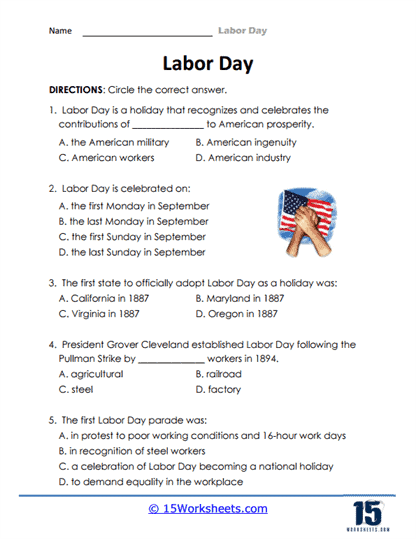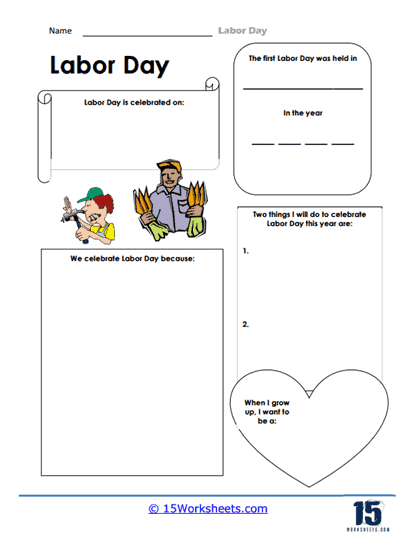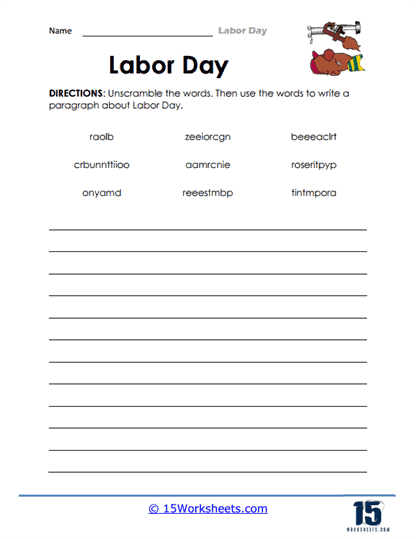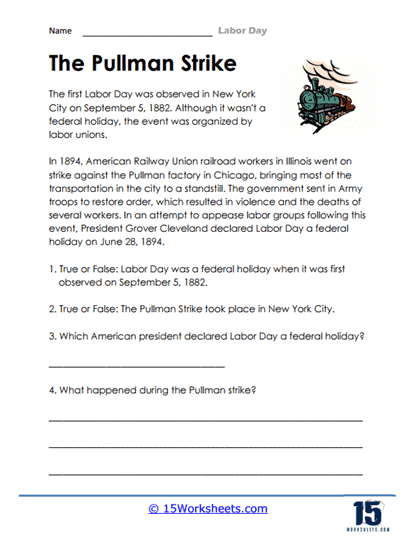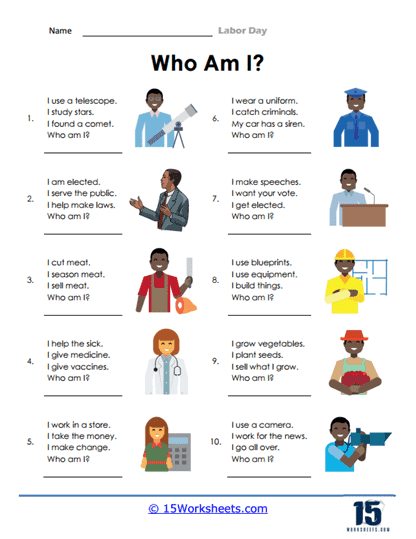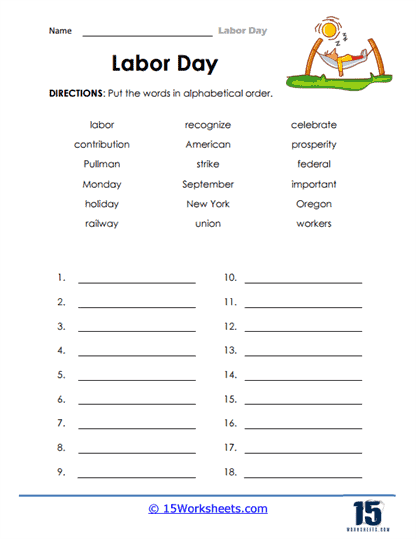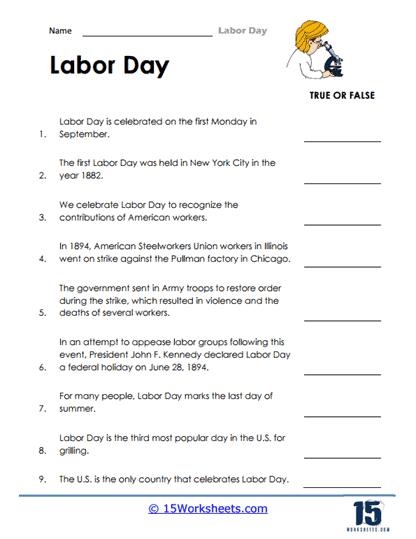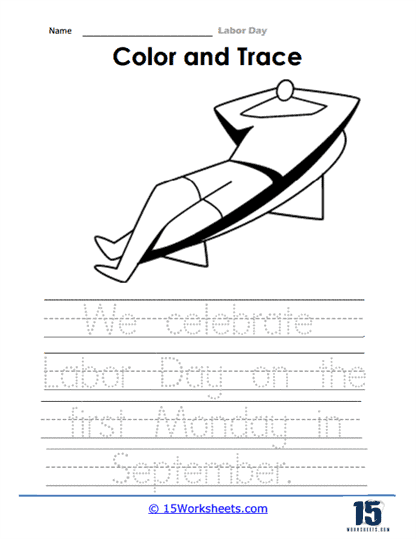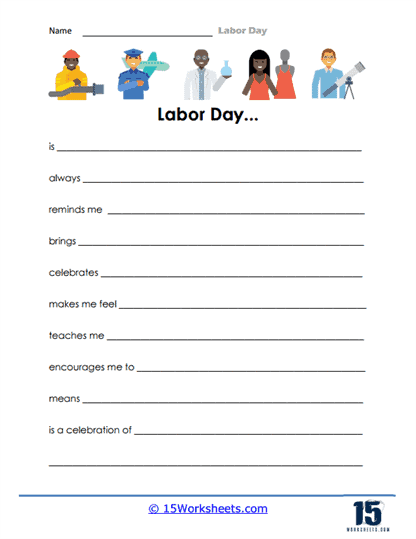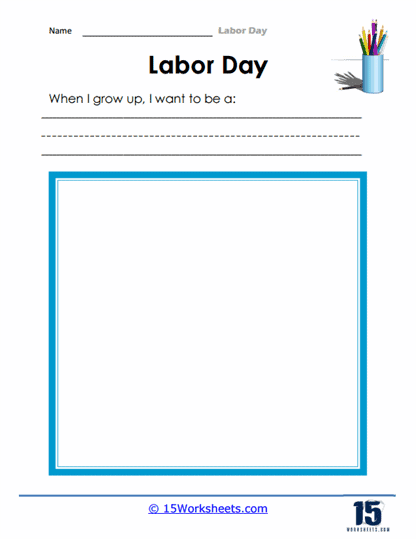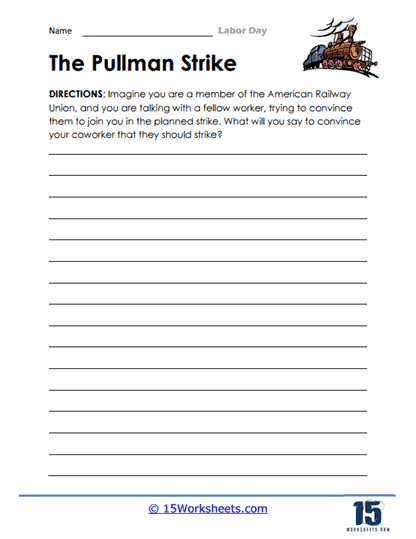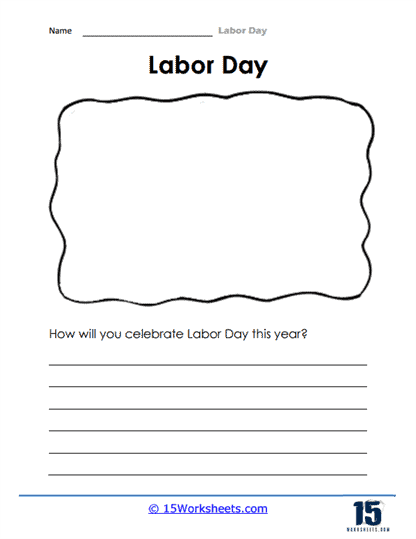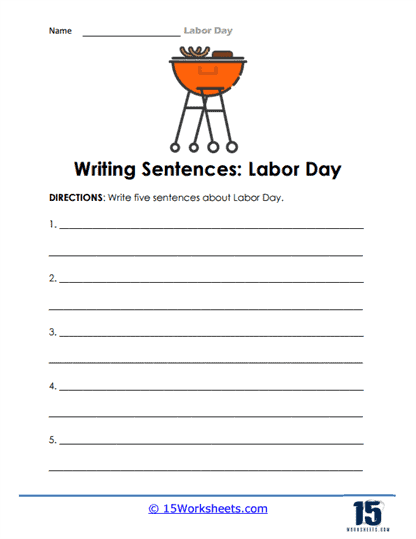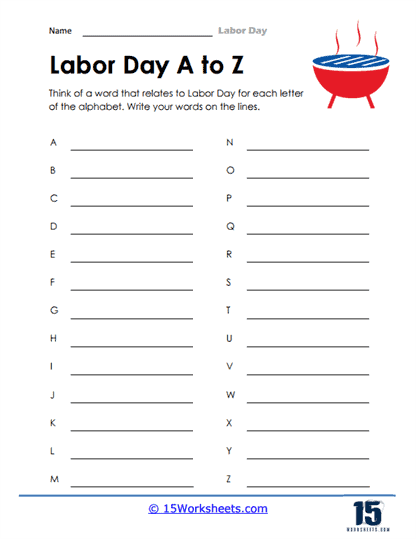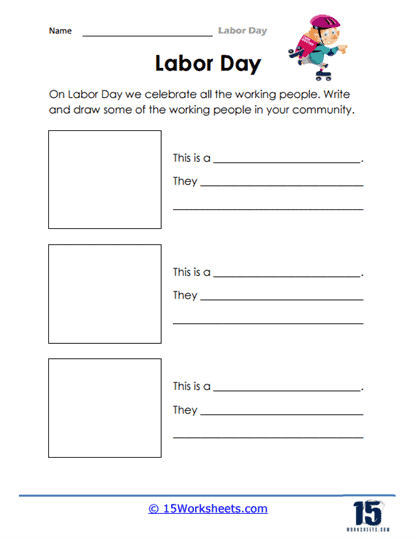Labor Day Worksheets
All About These 15 Worksheets
This collection of 15 provides an immersive experience aimed at celebrating and recognizing the invaluable contributions of workers while deepening students’ appreciation for Labor Day. Each worksheet has been crafted to engage students in an interactive exploration of the rich history behind this holiday, the profound impact of labor rights, and the enduring significance of the labor movement. Through a wide array of activities, students will not only gain historical knowledge but also develop a sense of empathy for workers, sharpen their critical thinking, and cultivate a deeper respect for the various roles that sustain our communities.
At the core of these worksheets is the opportunity for students to delve into the history of Labor Day through diverse formats that cater to different learning styles. Whether they are answering multiple-choice questions, deciphering true or false statements, analyzing infographics, or responding to thought-provoking writing prompts, students will be challenged to demonstrate their understanding of why Labor Day exists. They will be encouraged to connect the dots between historical events and current labor rights, realizing that the holiday is not just a day off from school but a day of recognition for the struggles and triumphs of workers who fought for fair conditions.
Building upon this foundation, the worksheets also serve to enrich students’ vocabulary by introducing key terminologies associated with labor rights, unions, and the workforce. Understanding words such as “solidarity,” “unionization,” “collective bargaining,” and “labor strike” empowers students with the language needed to discuss labor issues confidently and thoughtfully. This not only strengthens their grasp of the subject matter but also prepares them to engage in meaningful conversations about workers’ rights in the present day.
These worksheets will also provoke introspection and personal reflection. Students will have the chance to express their own thoughts on the significance of Labor Day, going beyond surface-level facts to explore the deeper meaning of work in society. What does it mean to be a worker? How has labor shaped the world we live in? These are the kinds of questions that students will be prompted to answer, developing a more nuanced understanding of the value of work-not just as a means to an end, but as a vital component of a functioning society.
An integral aspect of this resource is the emphasis it places on recognizing the diverse types of workers within our communities. From teachers and nurses to construction workers, farmers, and delivery drivers, students will learn about the countless individuals who keep society running smoothly. Through guided activities, they will reflect on the impact each job has, fostering a sense of gratitude and respect for the people who perform these essential roles. This understanding is critical, as it teaches students that every job, no matter how seemingly ordinary, plays a part in the larger fabric of society.
In addition to appreciating the roles of others, students will also have the opportunity to explore various careers and reflect on their own interests and aspirations. The worksheets encourage students to imagine their future careers and consider how their passions and skills might align with different job roles. They will explore questions like: What kind of job would I enjoy? How can I contribute to society through my work? These reflections can spark a deeper interest in career exploration, pushing students to consider not just what they want to do, but also the kind of impact they want to have on the world.
By the time students complete this series of worksheets, they will have developed a well-rounded understanding of Labor Day’s historical context, the importance of workers’ rights, and the diversity of roles within the workforce. More importantly, they will have fostered a greater appreciation for the value of work and the individuals who perform it, inspiring them to think critically about their own futures. Whether they aspire to be doctors, engineers, artists, or teachers, these activities will encourage students to think about how they can contribute to society in meaningful ways while advocating for fair and safe working conditions in whatever career they choose.
What is Labor Day?
Labor Day is an annual public holiday in the United States, celebrated on the first Monday of September. It is dedicated to honoring the contributions and achievements of the American labor force and the role they play in the development and prosperity of the country. The holiday also traditionally marks the unofficial end of summer, with many schools and businesses resuming their regular schedules after the long weekend.
The origins of Labor Day can be traced back to the late 19th century when labor unions began to grow and advocate for better working conditions, fair wages, and reasonable work hours. The idea of a special day to celebrate the American worker was proposed by various labor union leaders, including Peter J. McGuire of the American Federation of Labor and Matthew Maguire of the Central Labor Union.
The first Labor Day celebration was held on September 5, 1882, in New York City, organized by the Central Labor Union. The event featured a parade, speeches, and festivities, attended by thousands of workers and their families. Following the success of the New York celebration, other states began to adopt the holiday, and by 1894, 23 states had recognized Labor Day as an official holiday. On June 28, 1894, President Grover Cleveland signed a bill into law, making Labor Day a national holiday.
Today, Labor Day is celebrated with various events and activities, including parades, picnics, barbecues, and fireworks. It is also a popular weekend for travel and outdoor recreation, as families and friends gather to enjoy the last days of summer before the start of the fall season. The holiday serves as a reminder of the importance of workers’ rights and the ongoing efforts to ensure fair labor practices and conditions for all.

